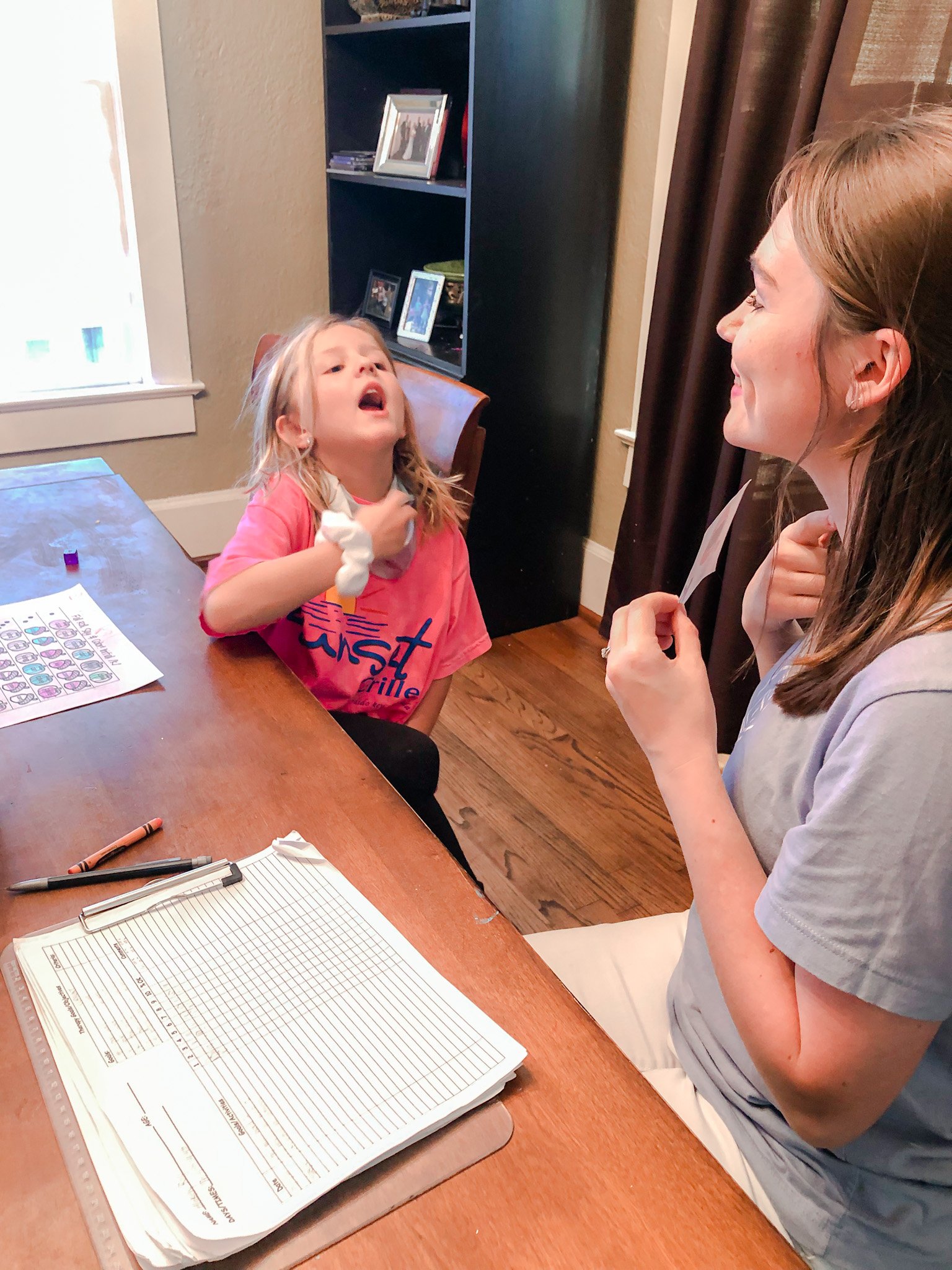What We Treat
Speech Disorders
Difficulty producing speech sounds as characterized by omitting sounds from words, substituting one sound for another, and distorting speech sounds. Articulation errors may make it difficult for the child to be understood by others.
When an individual has difficulty understanding and using the sound system for how sounds fit together to create words. A child may display patterns of speech errors and incorrectly produce groups of sounds (sounds produced in the back of the mouth, sounds at the ends of words, sounds at the beginning of words, etc). The use of phonological processes in speech, especially when several are used at the same time, can greatly affect the ability to be understood by others.
A motor speech disorder that makes it difficult for children to coordinate their speech mechanism (lips, teeth, tongue, jaw) to produce speech sounds. CAS is often characterized by inconsistent speech sound errors.
A category of speech disorders that includes stuttering and cluttering. Stuttering involves a disruption in the fluency of speech, often involving repetitions or prolongations of sounds, syllables, words, or phrases. For an individual who stutters, these dysfluencies often occur quite frequently and are difficult to control. Cluttering involves breakdown in an individual’s fluency due to rapid and/or irregular rate of speech.
Language Disorders
Language disorders may include having difficulty understanding what others are saying (receptive), having difficulty expressing one's own thoughts and feelings (expressive), or both.
A late talker is a toddler between 18-30 months who has difficulty in the area of spoken language or expressive communication. He or she can understand language and is developing typically in the areas of play skills, motor skills, thinking skills, and social skills, but has a small spoken vocabulary for his or her age.
ASD is a developmental disorder that affects the social, behavioral, and communicative aspects of an individual’s life. Individuals with autism have difficulty effectively communicating with others and socially relating to others. Manifestations of the disorder vary widely between individuals.
A child’s ability to use language in social situations by adapting language to fit social contexts, recognize social cues, and understand nonverbal language
Higher order thinking and reasoning skills that if impaired may give children trouble with attention, planning, and organizational skills.
Problems with phonological awareness, word recognition/decoding, spelling/writing, and reading comprehension
Occupational Therapy Services
Sensory integration is the process by which we receive, interpret and respond to information through our senses such as smell, touch, sound or movement. Symptoms of sensory processing and integration difficulties may include:
- Increased sensitivity to or avoidance of sounds, smells, touch or movement.
- Seeking constant movement, jumping, crashing or spinning
- Under-responsiveness to certain sensations such as hot/cold and pain
- Emotional reactivity
- Difficulty coping with transitions or change
Activities of daily living (ADLs) are activities a child participates in related to self-care. This includes tasks such as dressing, bathing and toileting. Occupational therapy addresses the following, with relation to ADLs:
- Sleep difficulties, including participating in routines in preparation for sleep and sensory accommodations
- Difficulty with dressing, shoe tying or manipulating fasteners & buttons on clothing
- Difficulty participating in brushing teeth/hair, washing face and toileting
Fine motor skills refers to the ability to generate and coordinate the movements of the hand, wrist, elbow and arm to complete tasks. Difficulties in motor planning, precision, muscle strength or dexterity may result in the need to see an occupational therapist for a variety of skills, including the following:
- Pencil grasp and pressure
- Opening and closing packages
- Manipulating toys and puzzles
- Cutting with scissors
- Coloring/drawing/tracing
- Tying shoes
Occupational therapy addresses a number of visual concerns from a motor and executive functioning perspective including:
- Difficulty with letter/number recognition, sizing, formation and line placement
- Difficulty with tracking objects such as a toy, ball, bubbles, etc.
- Difficulty copying or tracing shapes, letters or numbers
Play is one of the primary occupations of a child. It is through play that children learn crucial social and problem-solving skills, creativity, motor skills and make sense of the world around them. If your child is struggling to engage in age-appropriate play, he/she may benefit from occupational therapy. The following functional play skills are some examples of the skills occupational therapy can help address:
- Engaging with peers in cooperative or pretend play
- Playing appropriately with toys
- Building with blocks (and other types of constructive play)
- Sensory play
Gross motor skills (the ability to coordinate large muscle groups) are integral to childhood development. If a child appears clumsy or uncoordinated, occupational therapy can provide interventions related to functional outcomes in the following areas:
- Exploration of the child’s environment through sitting, crawling or walking
- Ball skills (hitting, throwing, kicking)
- Riding a bike
- Bilateral coordination (using both sides of the body simultaneously)
- Crossing midline
Skills related to eating and feeding are crucial for physical health and development. Children who experience the following difficulties related to feeding may benefit from occupational therapy intervention:
- Trouble using utensils
- Trouble drinking from an open cup or straw
- Difficulty tolerating and chewing certain textures
Additionally, we have several Spanish-English bilingual therapists!
Read our blog posts about the difference between speech and language as well as how to tell if your child needs speech therapy.



